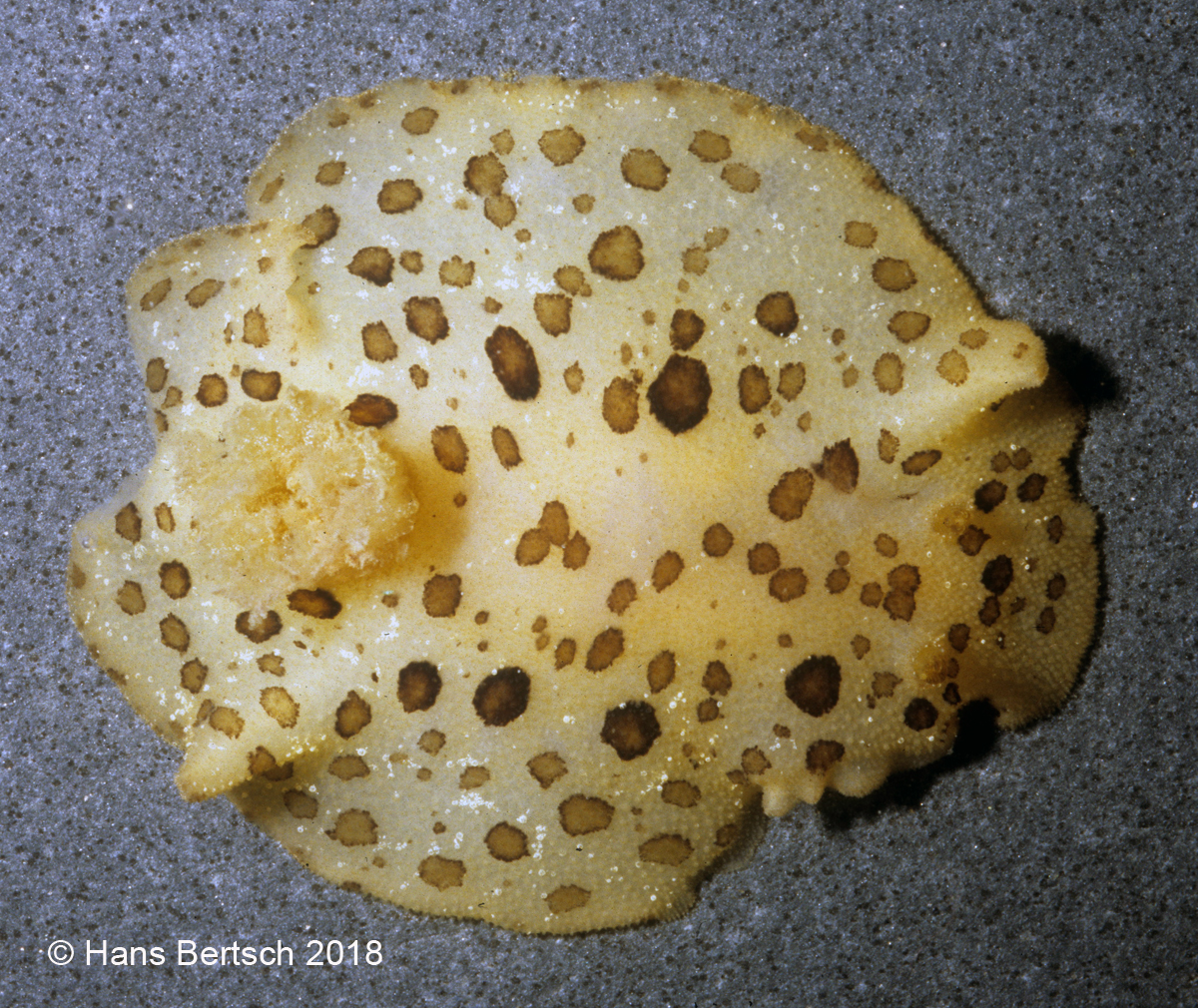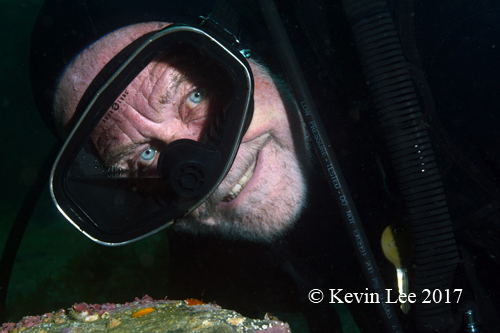 |
Peltodoris rosae, Holotype (photo by Hans Bertsch)
Peltodoris rosae Valdés & Bertsch, 2010
To date, this rare species is known only from the 66 mm long holotype specimen collected at Punta la Gringa, Bahía de los Ángeles (BLA). This species has a yellowish background color with white patches, white spots, and yellowish tripinnate gills. The body is wide and oval, with the posterior end of the foot covered by the mantle; the dorsum is covered with spiculose tubercles. The radular formula is 29 x 40.0.40, with hamate lateral teeth possessing a single non-denticulate cusp.
This Gulf of California species is most closely related to the allopatric Peltodoris mullineri millenbertsch Millen & Bertsch, 2000, described from California and the Pacific coast of Baja California. Peltodoris mullineri has been the subject of two BOWs, the first over 1000 weeks ago as an undescribed species of Peltodoris. “Both species have a yellowish background color with dark patches and yellowish tripinnate gills. However, the dark patches of P. mullineri are composed of aggregations of individual small spots, whereas the patches in P. rosae are solid colored. According to Millen & Bertsch (2000), P. mullineri shows little variability, and the three specimens examined were virtually identical. Other external differences between these two species include the presence of white spots on the mantle margin of P. rosae and a higher body profile of P. mullineri. Anatomical differences include the presence of vaginal glands in P. rosae and the proportionally larger bursa copulatrix” valdesbertsch (Valdés & Bertsch, 2010)
Ángel and I named P. rosae in honor of Rosa del Carmen Campay Villalobos, who has been to BLA various times, along with granddaughter Adrian Ivette Cadena. Ivette, of course, has Tenellia ivetteae Gosliner & Bertsch, 2017, named in her honor. Then there is grandpa’s honor of Bajaeolis bertschi Gosliner & Behrens, 1986. All three species have their type localities at Punta la Gringa, BLA! Which brings us to a bit of science history. Sixteen species of nudibranchs have been named with their type localities in the BLA region; ten of them are patronyms; four of us (Jim Lance, Terry Gosliner, Dave Behrens and myself) have both named species and have had a species named in our bertschbla honor from BLA. A review of the species and their namers and namees reads like a veritable Who’s? Who? of eastern Pacific researchers, from Wes Farmer to Craig Hoover!
More information about these and other nudibranch species from the Gulf of California can be found in the marine invertebrates reference book, Marine Invertebrates of Northwest Mexico.
Imperial Beach, Calif
Oct., 2018
Send Hans email at hansmarvida@sbcglobal.net

|
Photo courtesy of Kevin Lee
